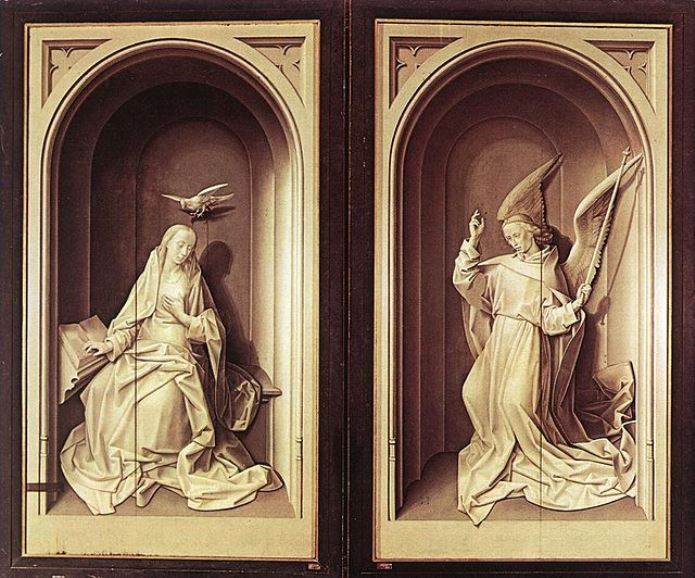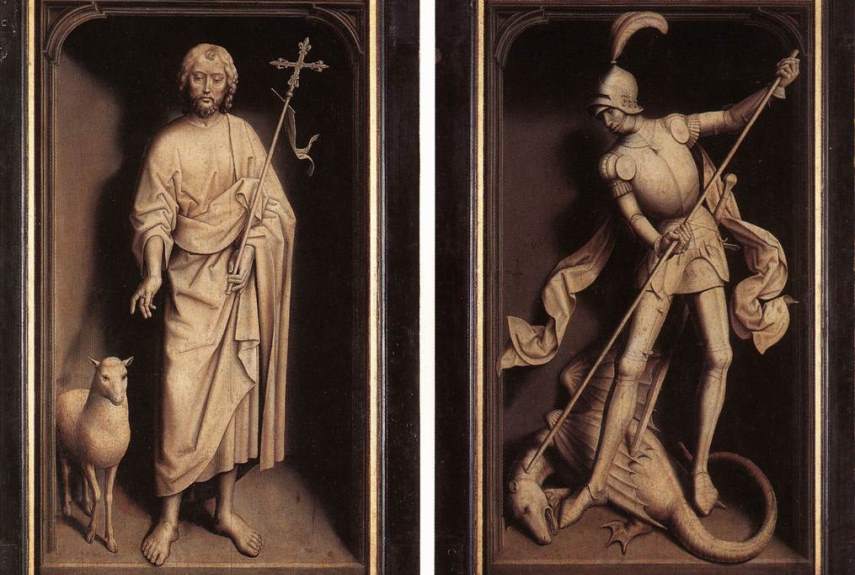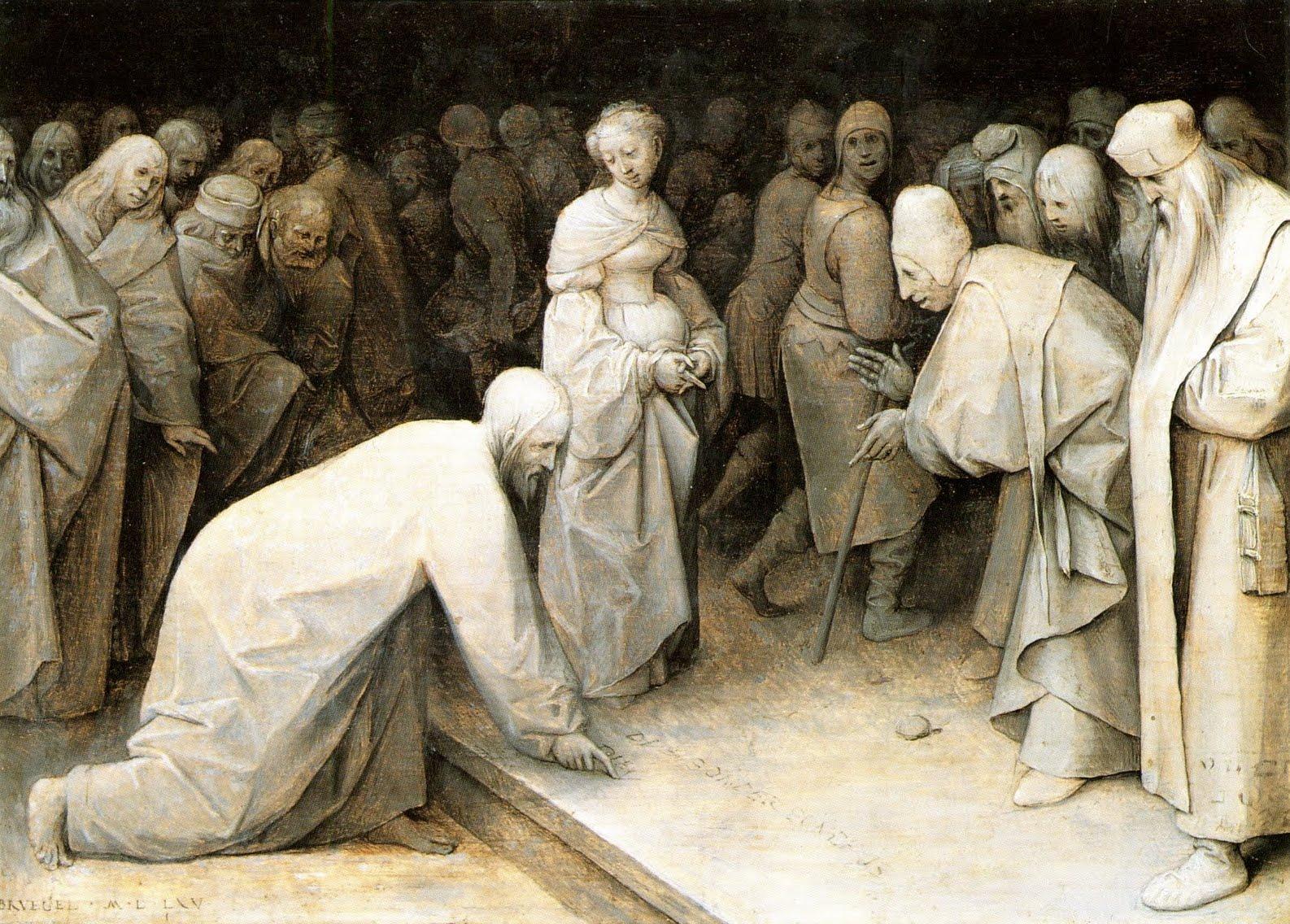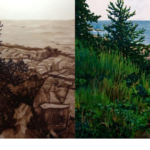The grisaille technique is a captivating method of painting that has intrigued artists for centuries. This unique approach to visual storytelling relies on the power of monochrome, using shades of gray or a single color to create depth, form, and emotion. The grisaille technique challenges artists to convey their vision without the full spectrum of colors, resulting in works that are both striking and nuanced.
The Origins and Evolution of Grisaille

The grisaille technique has a rich history that spans centuries, evolving from its early roots to become a versatile tool in the modern artist’s repertoire. This section explores the fascinating journey of grisaille through time and its impact on various art movements.
Medieval Illumination and Stained Glass
During the Middle Ages, the grisaille technique found a prominent place in the creation of illuminated manuscripts and stained glass windows. Monastic scribes and artists used grisaille to add depth and dimension to their intricate illustrations, often as a preparatory step before applying vibrant colors.
In the realm of stained glass, grisaille became a crucial element in the design and execution of cathedral windows. Artists used this technique to create delicate patterns and figurative elements that allowed more light to penetrate the glass while still providing visual interest. The interplay between grisaille elements and colored glass sections created a mesmerizing effect that continues to captivate viewers to this day.
Renaissance Mastery
The Renaissance period saw a flourishing of the grisaille technique, with many master artists incorporating it into their creative processes. Painters like Jan van Eyck and Giotto di Bondone used grisaille as an underpainting technique, laying down a monochromatic foundation before applying layers of color glazes. This method allowed for precise control over tonal values and helped achieve a remarkable sense of depth and realism in their works.
Notable examples of Renaissance grisaille include the exterior panels of Hubert and Jan van Eyck’s Ghent Altarpiece, which feature stunning monochromatic depictions of biblical figures. These grisaille paintings not only showcase the technical mastery of the artists but also serve as a testament to the expressive power of monochrome imagery.
Ancient Inspirations
While the grisaille technique flourished within the context of European art, the concept of using monochrome to create depth and form is not unique to this tradition. In ancient Egypt, artisans crafted intricate relief carvings, relying on the interplay of light and shadow to emphasize detail and shape. These works not only demonstrate advanced craftsmanship but also reflect a broader exploration of visual contrast as a fundamental artistic principle.
In the East, Chinese ink wash painting—later known as “sumi-e” in Japan—developed as a minimalist yet profoundly philosophical art form. By employing only black ink in varying levels of dilution, sumi-e sought to capture the essence and spirit of its subjects.
These artistic traditions demonstrate the widespread appeal of monochromatic art across civilizations, laying the groundwork for grisaille to emerge as a distinct technique in European art.
Grisaille in Various Art Forms

The versatility of the grisaille technique has allowed it to transcend traditional painting and find applications in a wide range of artistic mediums. This section explores how grisaille has been adapted and utilized across different art forms, showcasing its enduring appeal and creative potential.
Sculpture and Relief
In the realm of sculpture, the grisaille technique has found a natural home in the creation of reliefs and three-dimensional works. Sculptors have long appreciated the ability of monochrome to emphasize form and texture without the distraction of color.
Renaissance and Baroque sculptors often created intricate reliefs using a grisaille-like approach, carefully modulating the depth of carving to create the illusion of light and shadow. This technique allowed them to tell complex stories and convey emotions through subtle gradations of form.
In modern and contemporary sculpture, artists continue to explore the possibilities of monochrome, using materials like plaster, concrete, and metal to create works that rely on the interplay of light and shadow to convey their message. These sculptures often invite viewers to consider the essence of form and space, free from the influence of color.
Photography and Film
The advent of photography in the 19th century provided a new canvas for the application of grisaille principles. Black and white photography, by its very nature, relies on the skillful use of tonal values to create compelling images. Master photographers like Ansel Adams and Henri Cartier-Bresson elevated this monochromatic medium to an art form, using light and shadow to capture the essence of their subjects.
In the world of cinema, early filmmakers embraced the limitations of black and white film, creating visual masterpieces that relied on contrast and composition to tell their stories. Films like Fritz Lang’s “Metropolis” and Orson Welles’ “Citizen Kane” demonstrate how the principles of grisaille can be applied to moving images, creating unforgettable visual experiences.
Even in the age of color film and digital photography, many artists continue to work in black and white, recognizing the unique expressive power of monochrome imagery.
Digital Art and Design
The digital revolution has opened up new possibilities for exploring the grisaille technique. Graphic designers and digital artists have embraced monochromatic palettes to create striking logos, illustrations, and user interfaces. The simplicity and elegance of grisaille-inspired designs often stand out in a world saturated with color.
In the realm of 3D modeling and animation, artists use techniques reminiscent of grisaille to create texture maps and ambient occlusion passes. These monochromatic layers help define the form and surface properties of digital objects, much like the underpainting techniques used by Renaissance masters.
Video game developers have also found inspiration in grisaille, with some games featuring distinct visual styles that rely on monochromatic or limited color palettes. These artistic choices not only create memorable aesthetics but can also serve gameplay functions by highlighting important elements or creating specific moods.
Mastering the Grisaille Technique
For artists looking to incorporate the grisaille technique into their work, mastering this approach requires a combination of technical skill, patience, and a deep understanding of light and form. This section delves into the practical aspects of working with grisaille, offering insights and tips for artists at all levels.
Materials and Preparation
The first step in mastering the grisaille technique is selecting the right materials. While traditional grisaille often used oil paints, contemporary artists have expanded the palette to include acrylics, watercolors, and even digital mediums. Each material offers unique properties and challenges, so experimentation is key to finding the right fit for your artistic vision.
For traditional painting, a smooth, well-primed surface is essential. Many artists prefer to work on panels or canvas boards that have been prepared with multiple layers of gesso, sanded between coats to achieve a flawless finish. This smooth surface allows for precise control over the application of paint and facilitates the creation of subtle gradations.
When it comes to pigments, a high-quality black or dark umber paired with titanium white forms the foundation of most grisaille palettes. Some artists also incorporate earth tones like raw umber or burnt sienna to add warmth to their monochromatic compositions. The key is to select pigments that offer a wide range of values when mixed, allowing for nuanced transitions from light to dark.
Tonal Studies and Underpainting
Before diving into a full grisaille painting, many artists find it helpful to begin with tonal studies. These quick sketches or small-scale paintings allow you to explore the composition and value structure of your subject without the commitment of a larger work. Tonal studies can be done in charcoal, graphite, or diluted paint, focusing on capturing the essential forms and light patterns of the subject.
When moving to the canvas, the grisaille technique often begins with an underpainting. This initial layer serves as a roadmap for the final composition, establishing the major forms and value relationships. Many artists start with a mid-tone ground, working both light and dark values to build up the image. This approach allows for greater flexibility in adjusting the overall tonal balance of the piece.
Building Depth and Form
The true power of the grisaille technique lies in its ability to create a convincing sense of depth and three-dimensionality using only shades of gray. This is achieved through careful observation and rendering of light and shadow.
One effective approach is to start with the darkest shadows and gradually build up to the highlights. This method allows you to establish the core shadows and reflected light early in the process, creating a solid foundation for the form. As you work, pay close attention to the subtle shifts in value that occur as planes turn away from or towards the light source.
Edges play a crucial role in creating a sense of form and atmosphere in grisaille paintings. Soft, blended edges can suggest atmosphere or areas in shadow, while sharp, crisp edges can bring elements forward and create focal points. Mastering the manipulation of edges is key to creating dynamic and engaging grisaille works.
Contemporary Applications and Innovations

While the grisaille technique has a long and storied history, contemporary artists continue to find new and innovative ways to incorporate this approach into their work. This section explores how modern creators are pushing the boundaries of grisaille and adapting it to address contemporary themes and artistic concerns.
Digital Grisaille and Concept Art
In the world of digital art and concept design, the principles of grisaille have found new life. Many artists in the film, gaming, and animation industries use digital grisaille techniques to quickly establish mood, lighting, and composition in their concept sketches. These monochromatic digital paintings serve as a foundation for further development, allowing artists to focus on the essential elements of their designs without the distraction of color.
Digital tools have also enabled artists to create hybrid techniques that blend traditional grisaille approaches with modern technology. For example, some artists begin with a hand-painted grisaille underpainting, which is then scanned and further developed using digital painting software. This fusion of analog and digital techniques allows for a unique aesthetic that combines the tactile quality of traditional media with the flexibility of digital tools.
Grisaille in Contemporary Fine Art
Contemporary fine artists are revisiting the grisaille technique as a means of exploring themes of memory, perception, and the nature of representation. By stripping away color, these artists invite viewers to focus on the essential qualities of their subjects, often revealing new insights or challenging preconceptions.
Some artists use grisaille as a starting point for more complex, layered works. By beginning with a monochromatic underpainting and selectively adding color, they create pieces that exist in a space between representation and abstraction. This approach can be particularly effective in portraiture, where the interplay between the grisaille foundation and selective use of color can reveal deeper truths about the subject’s personality or emotional state.
Experimental Approaches and Mixed Media
The grisaille technique has also found its way into experimental and mixed media art practices. Some artists combine grisaille paintings with collage elements, creating works that juxtapose the subtlety of monochrome with the vibrancy of found imagery. Others use grisaille as a basis for three-dimensional works, applying monochromatic techniques to sculptures or installations.
In the realm of printmaking, artists have adapted grisaille principles to create stunning monochromatic prints using techniques like etching, aquatint, and mezzotint. These processes allow for an incredible range of tonal values and textures, resulting in prints that rival the depth and richness of traditional grisaille paintings.
Conclusion

The grisaille technique, with its focus on tonal values and form, continues to captivate artists and viewers alike. From its ancient origins to its contemporary applications, grisaille has proven to be a versatile and powerful tool for artistic expression. As we’ve explored in this article, the technique’s ability to convey depth, emotion, and narrative without relying on color makes it a timeless approach that transcends artistic movements and mediums.
Whether used as a preparatory method, a standalone technique, or as part of a more complex artistic process, grisaille challenges artists to see beyond color and focus on the fundamental elements of light, shadow, and form. In doing so, it offers a unique pathway to understanding and representing the visual world around us.
As we look to the future, it’s clear that the grisaille technique will continue to evolve and adapt to new artistic visions and technologies. Its enduring appeal lies in its simplicity and depth – a paradox that invites endless exploration and innovation. For artists and art lovers alike, the world of grisaille offers a rich tapestry of possibilities, waiting to be discovered and reimagined in each new generation.
✉️ Stay Connected — Subscribe for Weekly Updates
Discover timeless stories, practical wisdom, and beautiful culture — delivered straight to your inbox.
*We only share valuable insights — no spam, ever.






